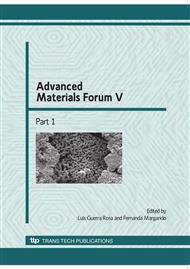p.597
p.605
p.612
p.618
p.624
p.631
p.637
p.643
p.651
Microstructural Evolution Modelling of Nickel Base Superalloy during Forging
Abstract:
In order to obtain a better understanding of mechanisms governing the microstructural evolution of nickel base superalloys during forging, experimental and numerical studies have been undertaken. For the experimental part, isothermal compression tests were performed at 1100°C for several ratio and strain rates to reproduce microstructural evolution during industrial forging. The resulting microstructures were analysed by Electron Back Scattered Diffraction method and Transmission Electron Microscopy to identify the dynamic recrystallization mechanisms. In parallel, numerical studies has been carried out in which a crystalline plasticity modelling implemented in the finite element code Abaqus® coupled to a recrystallization Cellular Automaton code was used to simulate forging. The first model allows us to obtain the local mechanical fields (strain, stress, crystallographic orientation, dislocation density …) and the second one predicts the dynamic recrystallization.
Info:
Periodical:
Pages:
624-630
Citation:
Online since:
January 2010
Authors:
Price:
Сopyright:
© 2010 Trans Tech Publications Ltd. All Rights Reserved
Share:
Citation:


